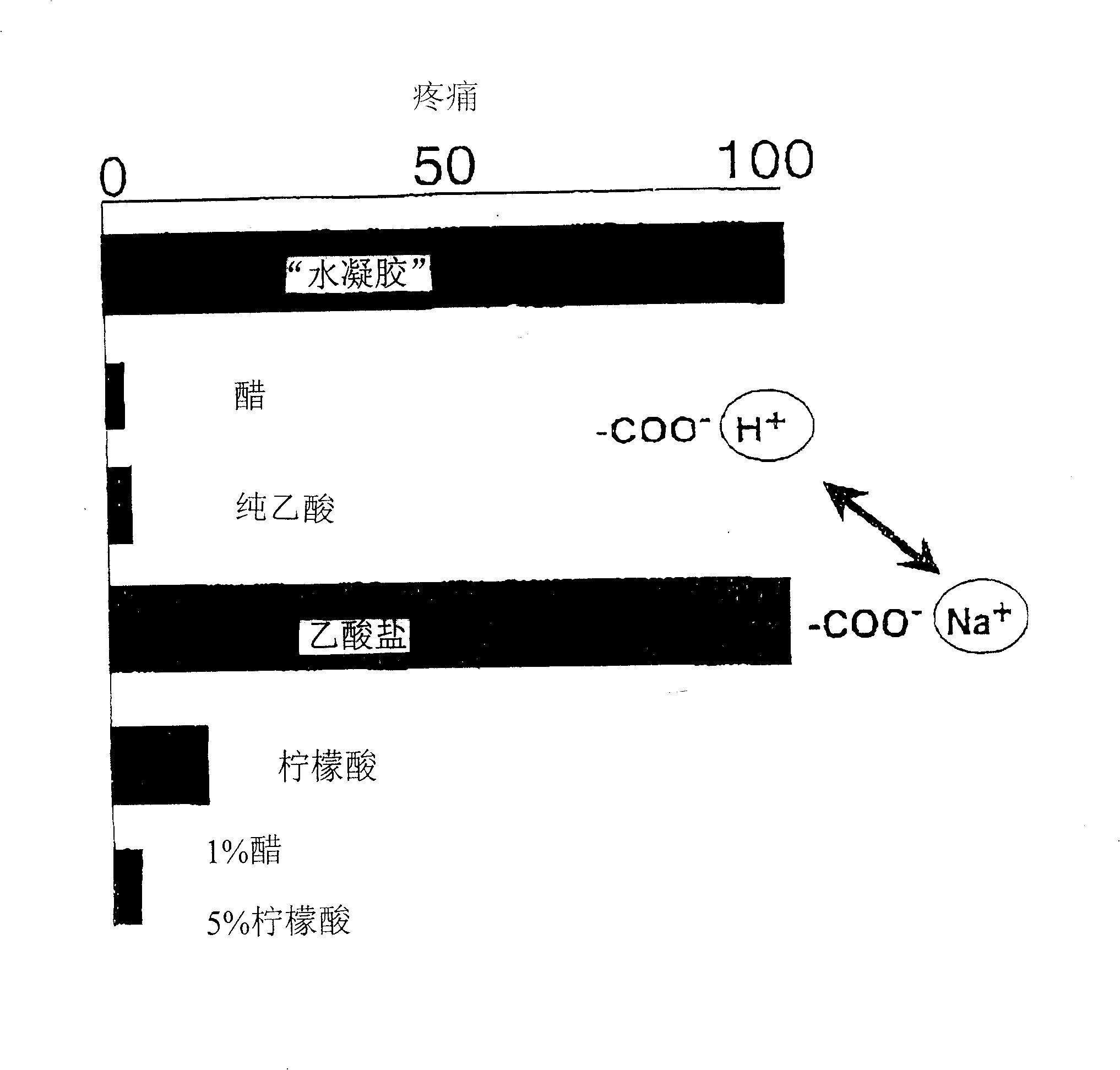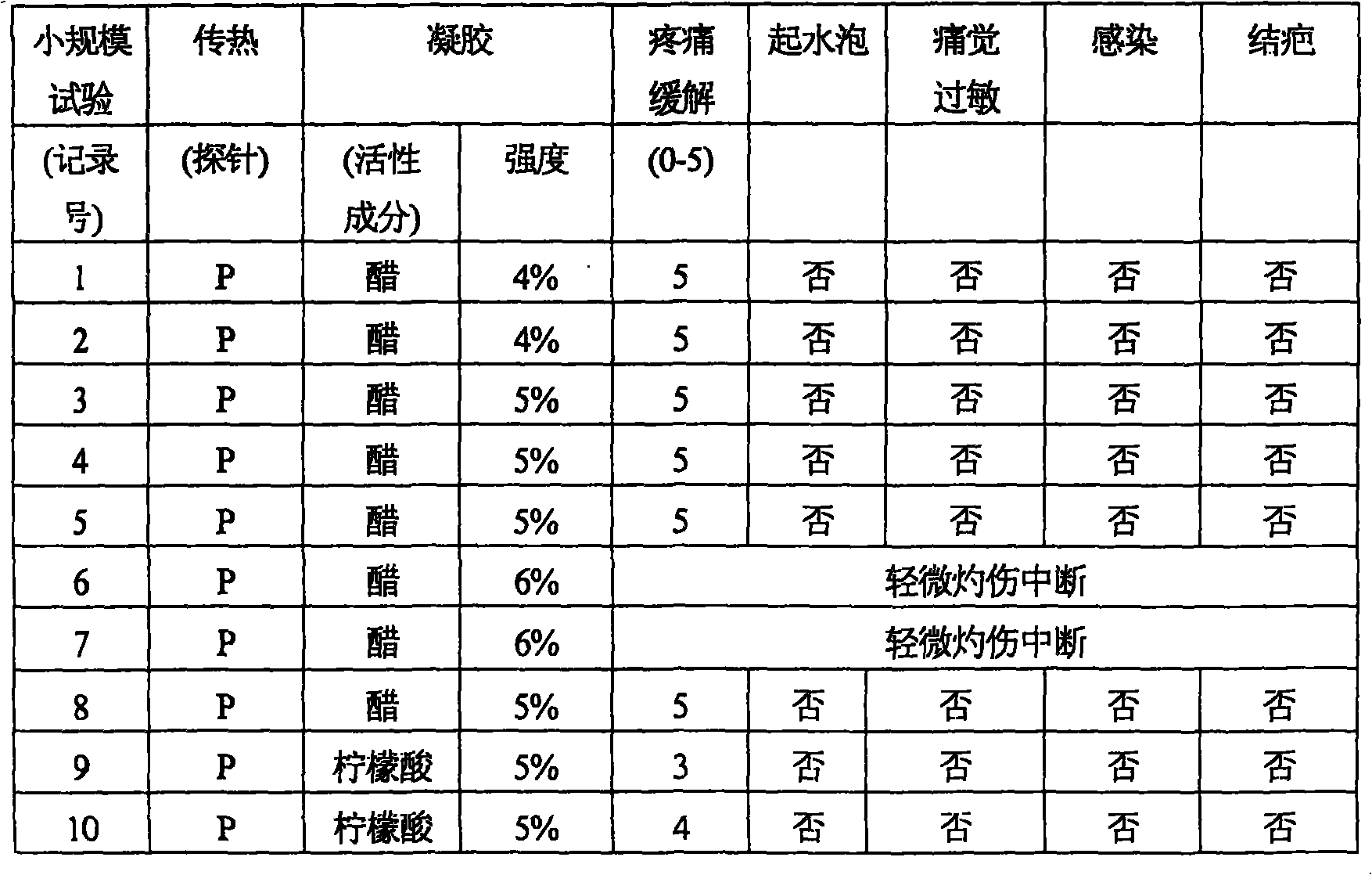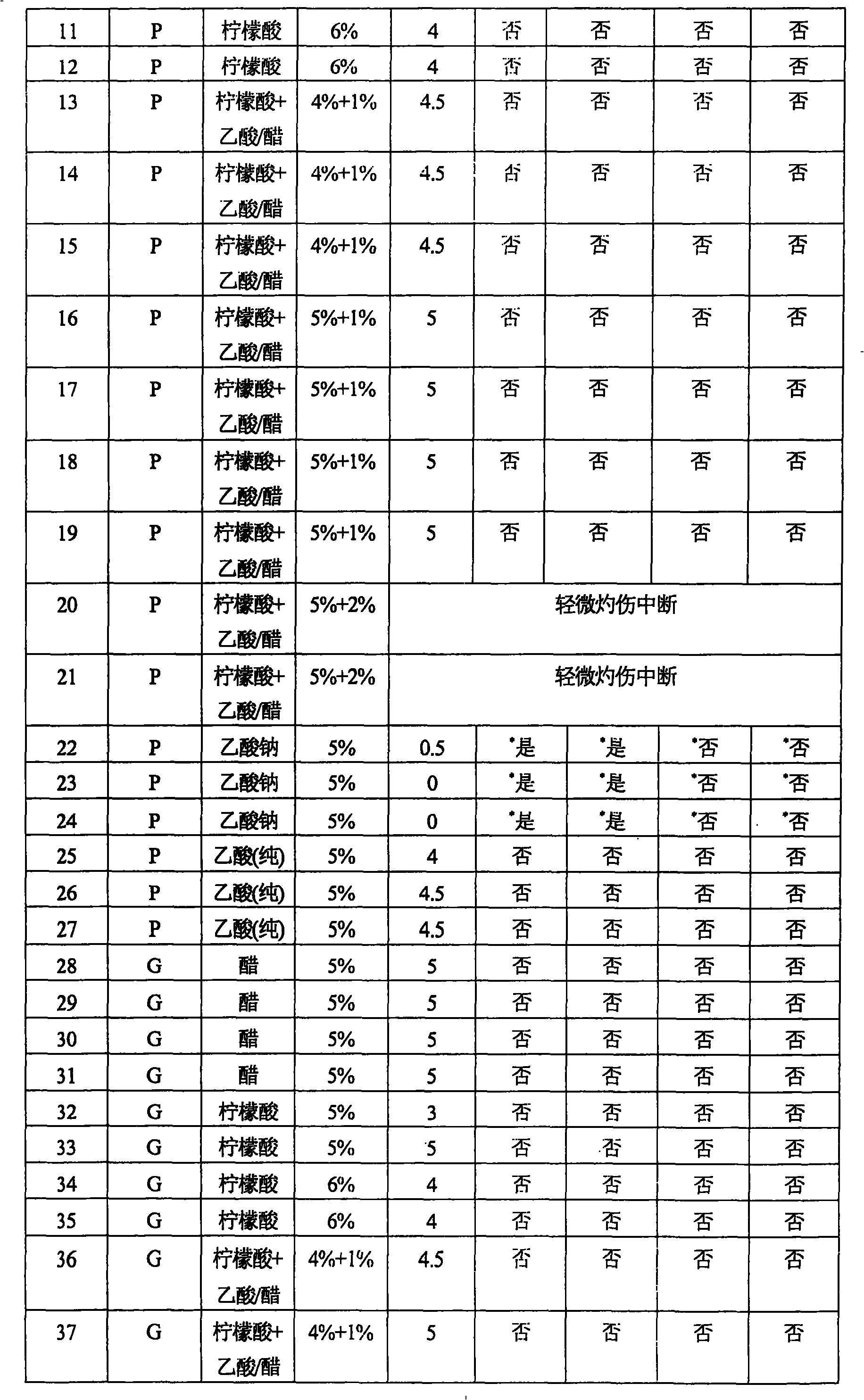Compsn. for treatment of burns
A composition and substance technology, which can be used in drug combinations, plant raw materials, preparations for skin care, etc., and can solve problems such as uncertainty of in vivo tissue applicability
- Summary
- Abstract
- Description
- Claims
- Application Information
AI Technical Summary
Problems solved by technology
Method used
Image
Examples
preparation example Construction
[0050] Preparation of acid gel
[0051] Each 5% (weight / volume) acetic acid and citric acid are made from glacial acetic acid (99.8%) and solid citric acid monohydrate (analytical grade) in distilled water, respectively. Mixtures containing 4 or 5% citric acid and 1% acetic acid are also prepared from citric acid monohydrate and commercial food-grade vinegar containing 5% acetic acid. Then, powdered dried marigold and aloe vera were added to these acid solutions or added to vinegar to achieve concentrations of 0.15% and 0.075%, respectively. This step is optional, and omitting herbs does not affect the effect of the final product. The mixture was incubated and stirred at room temperature for 20 minutes, cellulose filtered, and then EDTA was added to 0.1%. Subsequently, the solid-state carbopol TM Add 940NF or 980NF to 1.8% while stirring with strong magnetic force until the particles in the suspension disappear. Then slowly stir in 10N NaOH to adjust the pH of the mixture to 4.2 t...
Embodiment 1
[0079] Example 1: In vivo test of acid gel in subjects suffering from skin thermal damage
[0080] 47 adult volunteers were recruited in these studies. These subjects suffered accidental or intentional local burns on the surface of the skin layer. They used the pH 4.2 composition prepared above or a 5% acetic acid aqueous solution with pH 2.7 for treatment. Some of these subjects were tested more than once. This included the two near-full-thickness (third-degree) minor burns tested: both were successfully treated. The main response elements measured are: the speed and degree of disappearance of local pain, the progress and degree of congestion, the progress and degree of local edema, the progress and degree of blister formation, the progress and degree of wound infection, the time course of wound healing, and the depigmentation. The progression and degree of loss, the progression and degree of delayed hyperalgesia, the progression and degree of scar and keloid formation.
[0081] ...
Embodiment 2
[0085] A 46-year-old white female (ID#2) was burned on the back of her hand by a bowl of hot soup. Within one minute after the injury, she soaked her hand in a bowl of vinegar (@5% of acetic acid content). The pain was relieved within 20 seconds, the pain gradually appeared when the hand was withdrawn from the vinegar, and disappeared when the hand was immersed again. After about 5 minutes, she took her hands out of the vinegar. At this time, the pain had disappeared and she resumed normal activities. Blisters and scars did not form. She took a shower that night and the next morning and showed no signs of hyperalgesia.
PUM
 Login to View More
Login to View More Abstract
Description
Claims
Application Information
 Login to View More
Login to View More - R&D
- Intellectual Property
- Life Sciences
- Materials
- Tech Scout
- Unparalleled Data Quality
- Higher Quality Content
- 60% Fewer Hallucinations
Browse by: Latest US Patents, China's latest patents, Technical Efficacy Thesaurus, Application Domain, Technology Topic, Popular Technical Reports.
© 2025 PatSnap. All rights reserved.Legal|Privacy policy|Modern Slavery Act Transparency Statement|Sitemap|About US| Contact US: help@patsnap.com



